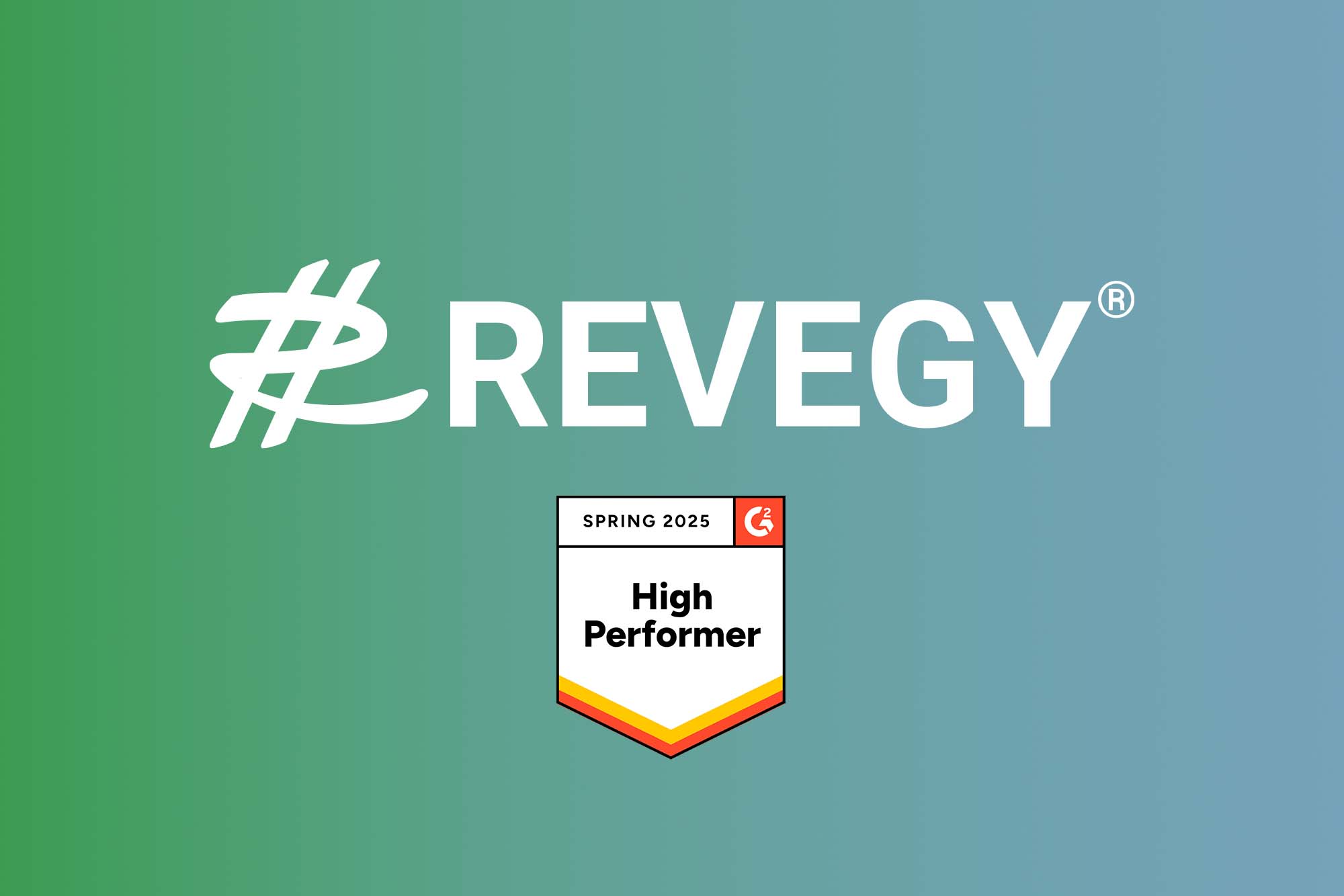Sales pipeline management is the root of your sales process and strategy. Without consistent and habitual pipeline analytics, it is very likely you and your team will miss the mark. Ensuring regular maintenance, team insights, and strategy implementation can set you up for success and ultimately lead to revenue growth.
Understanding Sales Pipeline Management
A sales pipeline is the visualization of your prospects’ journey through your sales funnel. It gives you a direction to track, organize, and execute sales actions to build a positive flow of revenue.
What are The Sales Pipeline Stages?
As discussed above, the sales pipeline involves the stages your customer has to pass, from discovery to closing the sale. To gain effective pipeline management, your customer will go through seven main sales pipeline stages. According to Vantage Point, 72% of sales managers hold sales pipeline review meetings with their sales reps several times per month. Conversely, 63% of respondents say that their companies do a bad job managing their sales pipelines.
1. Prospecting
This is the initial stage where your marketing team connects with your target audience through ads, campaigns, or promotional activities. It’s an opportunity to capture their attention and generate interest.
2. Lead Qualification and Nurturing
During this stage, your team maintains an ongoing interaction with your sales prospects. The focus is on building relationships and ensuring their continued interest in your products or services. One effective strategy is to provide them with a lead magnet that aligns with their needs.
3. Initial Meeting and Define Prospect Needs
Now it’s time to schedule a meeting with prospects and have a meaningful conversation. During this stage, your team should carefully listen and understand their specific needs and challenges. This will enable you to present tailored solutions that match their requirements.
4. Make an Offer
At this stage, you present your proposal and clearly demonstrate how your product or service can solve the problems your prospects are facing. You should emphasize the unique value and benefits they can expect by choosing your offering.
5. Negotiation
During this phase, you engage in discussions with the customer to understand their expectations and make any necessary adjustments. The goal is to find a mutually agreeable solution and reach a deal that satisfies both parties.
6. Close the Deal and Deliver the Product
This stage represents the successful completion of the sale. Ensure a smooth transition from the negotiation phase to finalizing the agreement and delivering the product or service promptly.
7. Post-sales
After your prospect makes a purchase, prioritize delivering exceptional service. By providing ongoing support, you establish trust and create a positive customer experience. This will increase the likelihood of customer renewals and generate referrals for potential prospects.
What is The Importance of Sales Pipeline Management?
Improved Forecasting
Efficient sales pipeline management in sales gives a clear insight into every team member’s contribution. For instance, as a sales leader, you can see how many of your sales reps have hit their targets and the total figures. This will tell you how close you are to your objective. Powered with this information, you can take better actions across departments, predict accurately, and strategize effectively.
Today’s sales leaders leverage Revegy’s Sales Opportunity Planning and Management Software to get crucial context and insights that help overcome sales visibility challenges and achieve more accurate forecasts to build predictable pipelines.
Optimized Resource Allocation
Revegy’s platform helps sales teams understand which key relationships to focus on, connections between key stakeholders, and customer goals and objectives. This can assist in allocating the right resources to help the sales team close more deals.
Revegy’s Revenue Enablement Software Technology improves cross-team collaboration to align your sales enablement efforts and grow strategically.
Enhanced Sales Performance
As a business, you want to grow the number and size of your opportunities. A sales pipeline reflects where you’re lagging, the risks, and where to double down. The final result? Overall improvement in sales performance. And that is the Revegy promise!
Revegy’s Sales Team Management Software equips sales leaders and reps to quickly understand complex accounts, stay aligned, gain strategic insights, mitigate risk, and close more deals.
Increased Conversions
Revegy’s platform provides powerful tools for relationship mapping and whitespace identification, which can help identify and eliminate bottlenecks in the sales process, thereby increasing conversion rates.
Revegy’s Sales Opportunity Planning and Management Software makes it easy for reps to manage the end-to-end sales cycle, increasing conversions and accelerating lead-to-close.
Improved Customer Satisfaction
A well-managed sales pipeline ensures that customers are engaged and supported at every stage of the sales process. To achieve this, Revegy’s platform helps sales teams align with buying groups in one easy-to-use platform. This leads to improved customer satisfaction, retention, and new customer acquisition.
With Revegy’s Sales Team Management Software, you can keep your reps focused on long-term customer success with clear visibility into big-picture strategy, milestones, and more.
Identify New Opportunities
Our robust analytics and strategic account planning tools can help sales teams visualize and organize the next steps to increase revenue, enabling them to pursue new opportunities such as market segments, products, or services.
B2B enterprise sales have evolved into complex, long-cycle processes, making it challenging to understand your pipeline and accurately forecast sales. That’s why it’s critical to leverage Revegy’s Sales Opportunity Planning and Management Software that helps to expose new opportunities and use real-time account intelligence to spot new players, trends, and cross-sell opportunities.
7 Steps For Foolproof Sales Pipeline Management
Now that you know the importance of sales pipeline management, the only question is how to build one. Let’s look at how you can build a foolproof sales pipeline:
1. Structure your Sales Pipeline
The first and most obvious step in building a sales pipeline is to give it shape. For that, define the stages that align with your prospect’s buying journey. Consider the typical process, starting from awareness and moving to consideration and decision-making.
2. Identify Opportunities and Set Goals
Do you know which stage your prospects spend most of their time in? Well, this is key to taking the right follow-up actions and resource allocation. For instance, the average customer may spend a week in the demo stage, but those who finally buy may spend two weeks.
Track the time prospects spend in each stage and determine the percentage of opportunities that advance to the next stage. This will help the sales team to know when to capitalize and close deals. In other words, it improves forecasting.
Identifying ideal customers for expansion can be a daunting task for account managers. However, Revegy’s Sales Account Planning and Execution Platform offers a comprehensive solution that enables account managers to capture and analyze up-to-date customer data.
With Revegy, you can gain deep insights into your most strategic accounts, including their business goals, market position, opportunities, and risks.
3. See Account Potential
To build a strong sales pipeline, it’s crucial to identify potential opportunities within your accounts.
Revegy’s sales opportunity planning and execution enables you to uncover the untapped potential in each account. By leveraging our platform, you can gain valuable insights into which accounts are ripe for expansion and set realistic goals. So you can empower your account management teams to grab opportunities when they reveal themselves within your sales pipeline.
4. Expose New Opportunities
Satisfying unmet customer needs is key to sales growth within your sales pipeline. You should be ready to pounce when opportunities appear. And you need a practical sales pipeline that enables this for you.
Revegy’s real-time account intelligence extraction helps account managers find new players, latch on to trends, and pinpoint up-sell and cross-sell opportunities. Using Revegy, you can find new opportunities within your accounts and ensure no potential revenue is untapped.
5. Set Realistic Quotas
Conducting detailed account analysis is vital for setting realistic quotas and goals.
Revegy’s platform allows you to review past account performance quickly. With this, you can set retention and expansion goals that receive buy-in from account managers and the boardroom.
6. Analyze Performance and Outcomes
Converting quotas into actionable plans requires a deep understanding of your account performance.
Revegy’s platform enables you to analyze performance, recognize successful account management workflows, and gain insights into account growth patterns. You can design account plans that align with data-driven insights, optimizing your performance.
7. Grow Key Accounts
Creating bigger opportunities and increasing account value is a priority for every business. Revegy provides insights into past account revenue generation. These details equip your account managers and sales leaders to make data-led decisions in your sales pipeline. With Revegy, you can adjust renewal pricing, tailor promotions, and maximize the earning potential of each account.
Effective Sales Pipeline Management Best Practices
Consistent revenue growth and sales success boils down to mastering the art of sales pipeline. In this section, you will find some of the best practices for effective sales pipeline management.
Use Coherent Sales Metrics to Unify your Data
One of the key challenges in a sales pipeline management is accessing accurate and up-to-date information on your accounts.
Revegy provides sales managers access to a single source of truth on account plans. By centralizing your data within the platform, you can eliminate the hassle of searching through multiple systems and spreadsheets. This unified view lets you retrieve vital details such as customer preferences, historical interactions, and sales strategies. Your team would be well-positioned to make informed decisions and take targeted actions.
Make Your Sales Process Customer-Centric
By understanding your customers’ needs and aligning your solutions with their key value drivers, you can build compelling businesses that resonate with buyers. The first step? Identifying the key value drivers that influence their purchasing decisions.
Revegy provides tools and insights to help you uncover these drivers, such as price, quality, and service. By focusing on what matters most to your target audience, you can tailor your messaging and positioning to showcase how your solutions directly address their pain points.
Focus on the Long Term
Effective sales pipeline management goes beyond short-term wins and focuses on building long-term customer relationships. You can build loyalty and secure repeat business by nurturing prospects and consistently providing value throughout their journey.
Revegy helps you take a strategic approach to long-term relationship building. You gain visibility into the entire customer lifecycle. On the platform, you can track milestones, anticipate customer needs, and develop personalized engagement strategies.
Leverage Reporting and Analytics
Data-driven insights are essential for optimizing your sales pipeline management. You can deeply understand your pipeline’s performance using reporting and analytics tools. You can identify bottlenecks quicker and make informed decisions to improve efficiency and conversion rates.
Revegy offers robust reporting and analytics capabilities, providing real-time visibility into critical sales metrics. It enables you to track key performance indicators, measure pipeline health, and identify areas for improvement to help your sales team see the way to win.
Eliminate Low-Potential Leads
While it’s crucial to prioritize high-value leads, it’s equally important to recognize when it’s time to let go of certain leads. Letting go can be challenging, especially after investing significant time and effort in building relationships.
However, there are clear indicators when a lead is no longer viable. It includes when they explicitly express disinterest, become unengaged, or repeatedly fail to progress to the next stage of the sales pipeline despite multiple interactions.
It’s essential to swiftly identify these “dead” leads, enabling you to redirect your focus towards more promising sales opportunities and avoid wasting time on leads unlikely to convert.
Review Pipeline Metrics Regularly
Ensure the vitality of your pipeline sales management by monitoring key sales metrics continuously. These include:
- Number of deals in pipeline
- Average deal size
- Percentage of deals won (close ratio)
- Average time it takes to close a deal (sales velocity).
By regularly reviewing these sales pipeline metrics, preferably weekly, you gain valuable insights into the health of your sales pipeline and overall business performance. Over time, it will help uncover modifications or enhancements needed in your sales process that impact your overall growth.
Shorten the Sales Cycle
In B2B sales, the sales cycle tends to be lengthy, with 75% of deals taking at least four months to close and 18% taking 12 months or more. A long sales cycle challenges sales effectiveness, as prospects have more opportunities to change their minds or explore alternative solutions.
Therefore, it’s crucial to keep your sales process as brief as possible. One of the most effective ways to do this is through relationship mapping. Revegy’s Relationship Maps can help sales teams map contacts from their CRM system. They can create visual representations that connect the dots between various stakeholders, coaches, and decision-makers.
Further, its drag-and-drop feature and organizational or influence chart are a breeze to make. With these, your sales teams can easily decide which relationships need more nurturing and the obstacles ahead.
Another thing to remember is to understand the ideal time to close a deal. With Revegy’s account planning, the sales team can quickly determine the ripe time, make informed decisions, and speed up the sales process.
Optimize Pipeline Processes
Creating a standardized sales process is critical to success and scalability. It may seem that each customer requires a unique approach. However, there are often commonalities among ideal customers in their needs and motivations. By identifying these, you can tailor your sales process to meet the needs of your target audience.
Standardizing the process allows for better efficiency, scalability, and consistently winning new business.
Customized sales techniques may be time-consuming and costly, whereas a standardized and repeatable process can be refined over time and adapted to the growth of your business. By implementing a standardized sales process, you streamline operations, improve productivity, and positively impact your bottom line.
With Revegy, you clearly understand which relationship to focus on and customer objectives. Plus, you get key insights and context into your processes with unified data, allowing you to design a more predictable pipeline. With blind spots out of your way, you can create cross-functional execution plans that give you results.
5 Tips to Turn Your Pipeline into Sales Generation
So, what’s the magic formula? We have 5 tricks that are sure to turn any mismanaged pipeline into a steady, predictable, and revenue-growing machine.
1. Measure, measure, measure.
If you are not analyzing data constantly, you may as well make random suggestions as to how much revenue generation there will be this year. You must have a deep relationship with your metrics to predict and hit your sales quota.
Be ready to measure your sales KPIs which could include completing x numbers of sales meetings, having x number of touchpoints with customers, the number of deals in your pipeline, the average size of deals in your pipeline, etc.
2. Focus on the best leads.
Any lead that seems to be moving in a positive direction can be exciting. But don’t let your reps get caught up in sparkling garbage. Make sure your team is focusing on the most high-value, sales-ready leads. By tracking your most engaged and valuable leads, your team can focus on those opportunities that are more likely to drive revenue growth.
3. Drop dead deals.
No matter how confident a rep feels about salvaging a lost opportunity, when it comes down to managing pipeline, drop that dead weight. If there are glaring roadblocks like a lack of communication or taking too long to move to the next stage, it’s time to say goodbye. Ridding themselves of that effort will show an immense improvement in the deals they chose to focus on.
4. Execute regular pipeline reviews.
In the end, as a leader, you are responsible for the team hitting their goals. If you just give them a strategy and let them loose without regular check-ins, do you think they will come to you at the end of the year with the perfect sales execution? (If you’re saying yes to yourself, we have some content you should check out.) Check the pipeline often. Meet with your managers to discuss scale, scope, and velocity. By keeping a handle on the process, you’re more likely to see an engaged team.
5. Give your prospects more content.
At Revegy, we talk about this all the time. How can we create more content that will connect with our prospects? Let’s show them that we understand their struggles, we offer real solutions, and that when they win – we win. Make sure to mix it up with writing, video, social, and interactive media because everyone engages with content a little differently. By showing your prospects that you are an authority on a subject that has been a pain point for them, they are more willing to trust you and work with you.
We have seen marked improvements at the end of a period, quarter, or year by implementing these small tweaks. It will help improve your forecasting, your team’s morale, and the confidence that executive leadership has in your sales organization. Most importantly, it will help you drive revenue growth.
In the end, it’s the combination of the people, processes, and technology you have in place that will make you successful. So, remember to invest quality time in those areas, and you’ll be sure to come out on top.
Unlocking Sales Success with Revegy, the #1 Sales Pipeline Management Software
In conclusion, effective sales pipeline management is crucial for maximizing revenue growth and ensuring sales success. With a well-structured sales pipeline and the right tools in place, businesses can enhance forecasting accuracy, allocate resources effectively, and ultimately improve overall sales performance.
If you’re ready to take your sales pipeline management to the next level, consider exploring the features and benefits offered by Revegy. Whether you’re a small business looking to scale or a large organization seeking enhanced efficiency, Revegy provides the tools and capabilities to drive revenue growth and sales success. Request a demo today!









